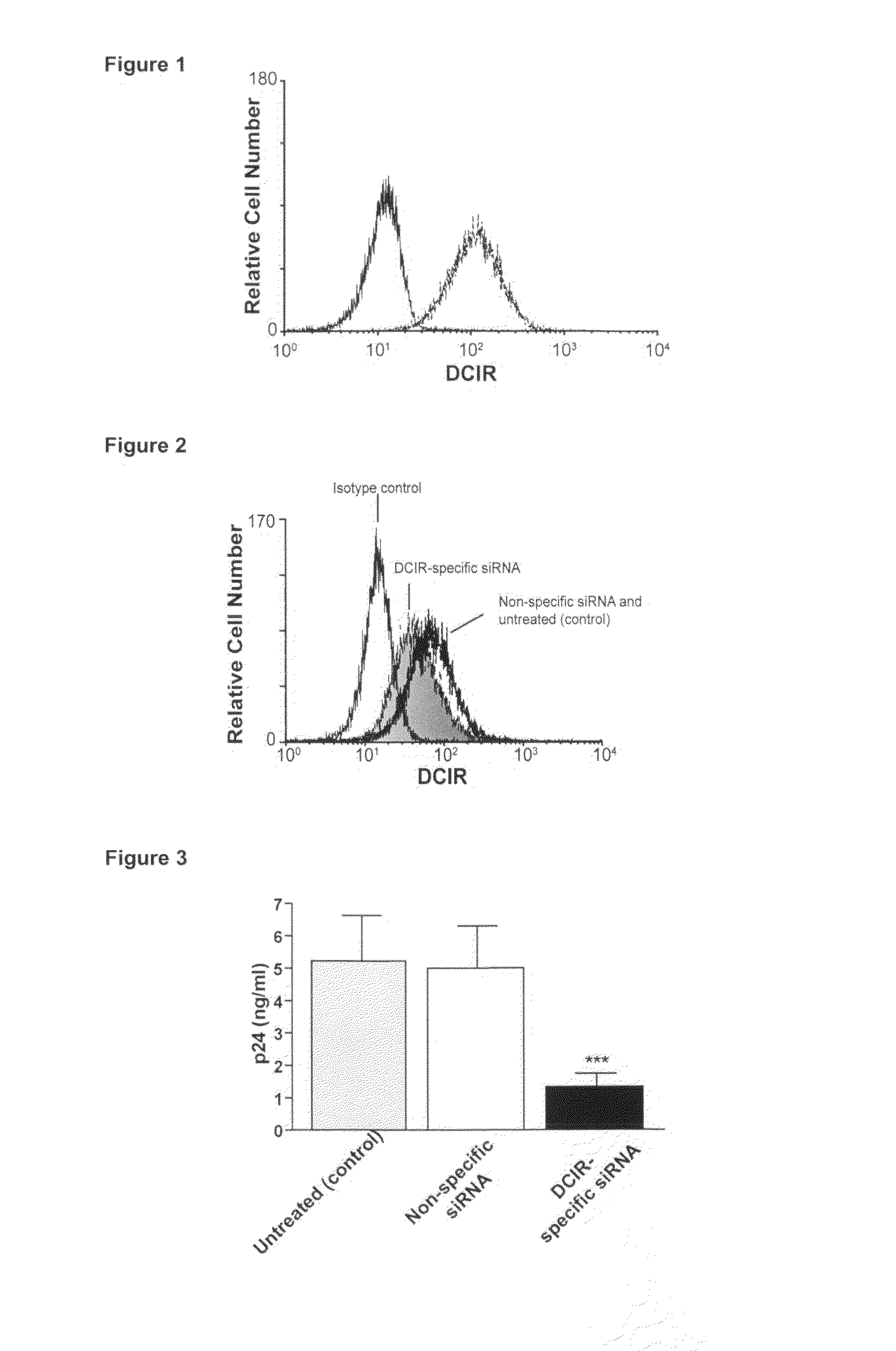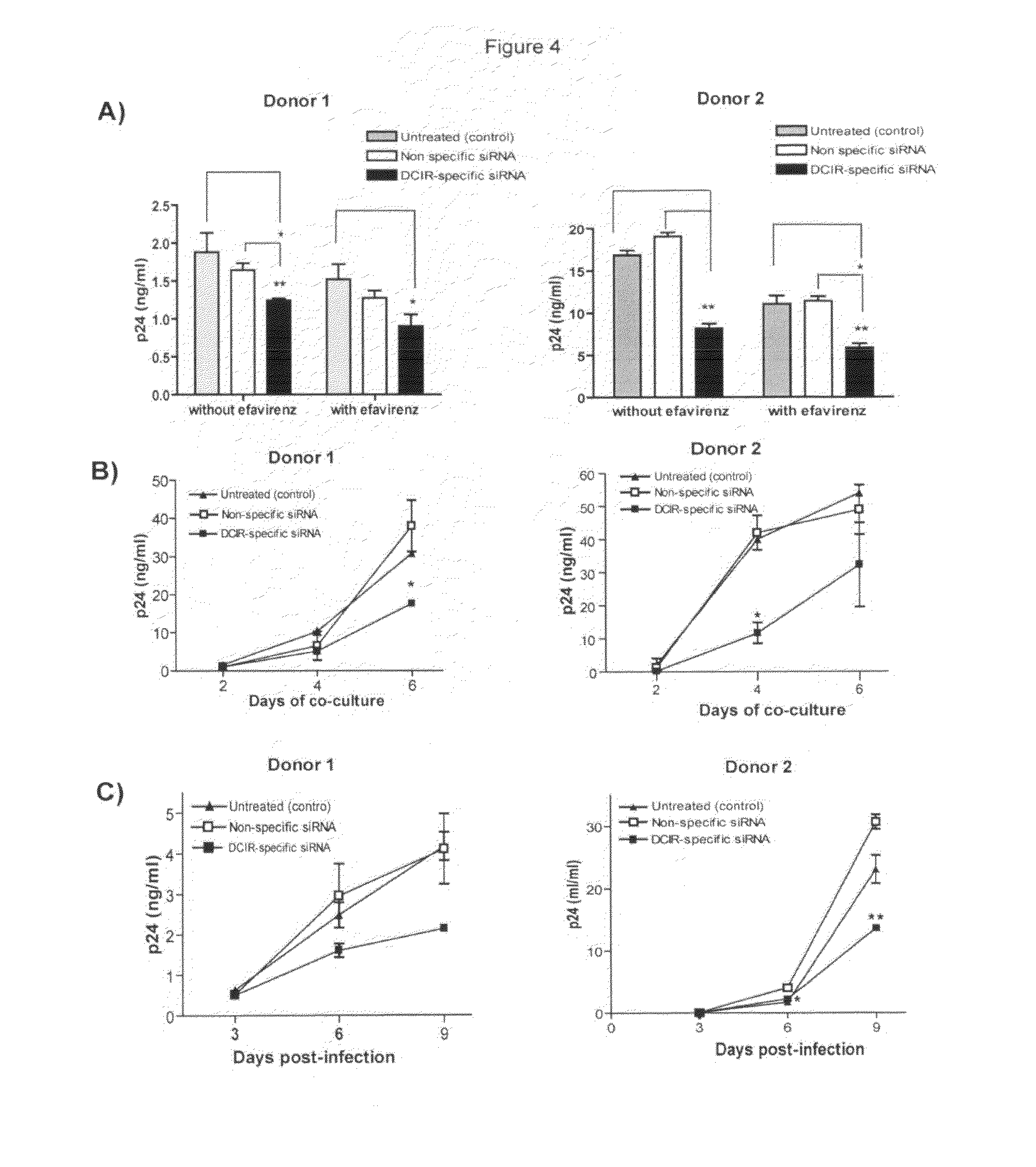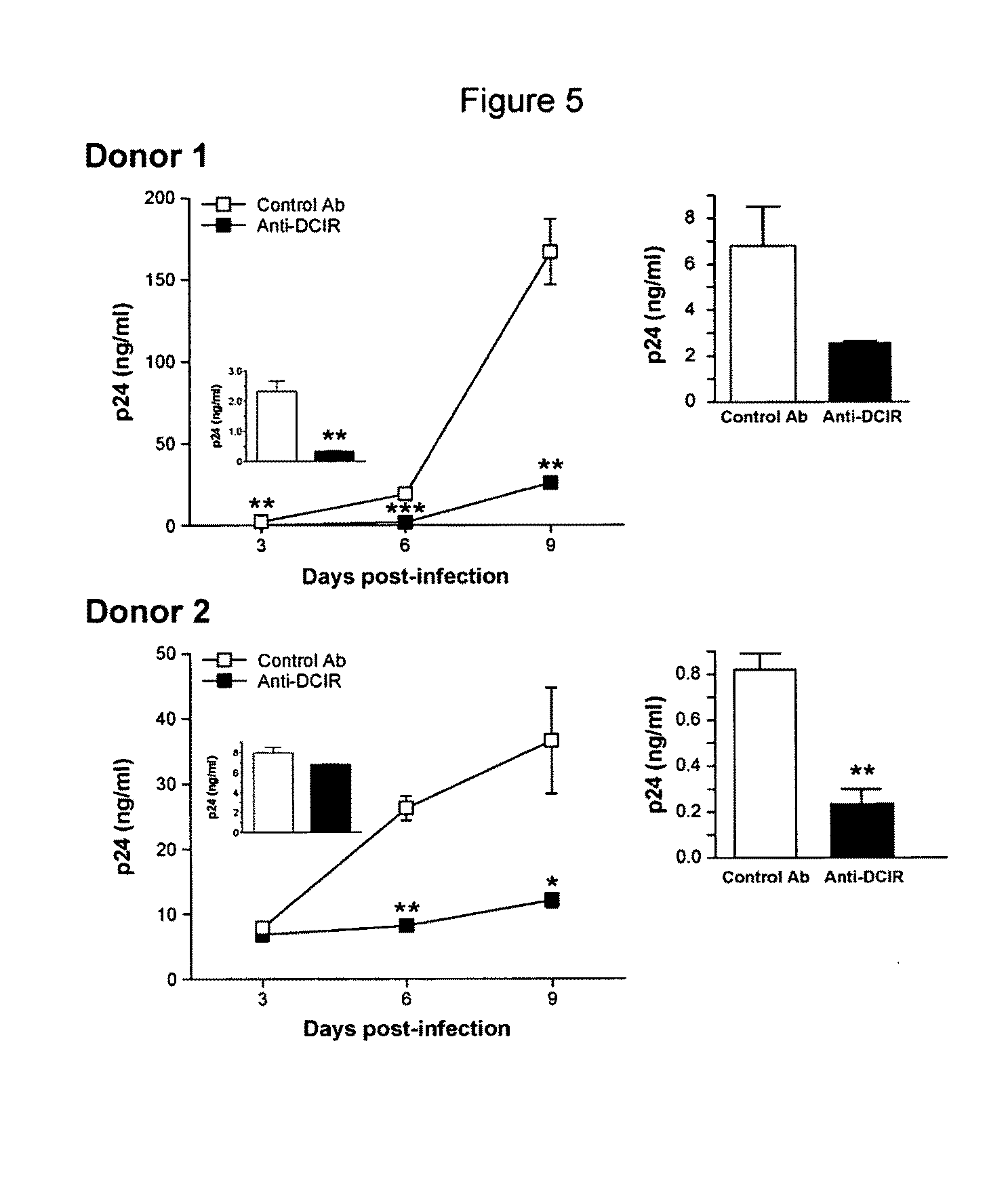Identification of therapeutic agents for HIV infection
a technology for hiv infection and which is applied in the field of identification of therapeutic agents, can solve the problems that the role of dcir has not yet been fully understood
- Summary
- Abstract
- Description
- Claims
- Application Information
AI Technical Summary
Benefits of technology
Problems solved by technology
Method used
Image
Examples
example 1
DCIR is Expressed on IM-MDDC
[0176]A previous study has demonstrated that DCIR is expressed by all circulating CD14+ monocytes, in DC derived from CD34+ cord blood progenitors as well as on the surface of DC generated in vitro upon culturing blood monocytes with GM-CSF and IL-4 (i.e. immature monocyte-derived DC or IM-MDDC) 7. This last observation is of high importance because IM-MDDC are routinely used as an experimental cell system to study characteristics of mucosal myeloid DC and to define the complexity of interactions between DC and HIV-1 8. To confirm that DCIR expression is maintained in IM-MDDC, cell surface expression of DCIR was determined by immunofluorescence staining and flow cytometric analysis.
[0177]Purified monocytes were cultured with GM-CSF and IL-4 for 7 days to derive IM-MDDC. DCIR expression was determined by flow cytometry analysis after staining with a commercial PE-conjugated anti-DCIR monoclonal Ab. Expression of DCIR is shown in FIG. 1 as a dotted line whe...
example 2
Role of DCIR in HIV-1 Uptake by IM-MDDC and Infection-siRNA Studies
[0179]In order to evaluate the potential role of DCIR in HIV infection, we used a first strategy, namely RNA interference (i.e. small interfering RNA or siRNA) to reduce DCIR expression in IM-MDDC. For the virus transfer assay, IM-MDDC were intentionally exposed to low doses of virions to better reflect the events occurring during mucosal transmission in vivo. Moreover, all virus stocks used in transmission assays were produced upon acute infection of primary human cells (i.e. PBMCs) to more closely parallel the natural microenvironment.
[0180]We thus employed RNA interference to reduce DCIR expression in IM-MDDC and analyzed the possible effect on HIV-1 transfer. IM-MDDC were either left untreated (control), transfected with a control siRNA, or transfected with a DCIR-specific siRNA. After 40 hrs, flow cytometry analysis of DCIR was performed using a combination of PE-labelled anti-DCIR and isotype-matched control Ab...
example 3
DCIR is Involved in Trans- and Cis-Infection Pathways
[0184]Previously published data demonstrated that HIV-1 is transferred from DC to CD4+ T cells through both trans- and cis-infection pathways 9. Experiments were therefore carried out to define whether DCIR can contribute to HIV-1 dissemination via trans- and / or cis-infection processes. To solve this issue, virus transfer studies were performed using IM-MDDC that were initially transfected with the DCIR-specific siRNA and also treated with EFV, a non-nucleoside reverse transcriptase inhibitor. This antiretroviral compound hampers the late transfer (i.e. de novo virus production by IM-MDDC or cis-infection pathway) without affecting the early transfer mode (i.e. trans-infection pathway).
[0185]In FIG. 4A, IM-MDDC (1×106 cells) were treated with Oligofectamine and then either left untreated (control) or exposed to a non-specific siRNA and a DCIR-specific siRNA. Next, cells were either left untreated or treated with EFV. IM-MDDC (2×10...
PUM
| Property | Measurement | Unit |
|---|---|---|
| time | aaaaa | aaaaa |
| temperature | aaaaa | aaaaa |
| pH | aaaaa | aaaaa |
Abstract
Description
Claims
Application Information
 Login to View More
Login to View More - R&D Engineer
- R&D Manager
- IP Professional
- Industry Leading Data Capabilities
- Powerful AI technology
- Patent DNA Extraction
Browse by: Latest US Patents, China's latest patents, Technical Efficacy Thesaurus, Application Domain, Technology Topic, Popular Technical Reports.
© 2024 PatSnap. All rights reserved.Legal|Privacy policy|Modern Slavery Act Transparency Statement|Sitemap|About US| Contact US: help@patsnap.com










